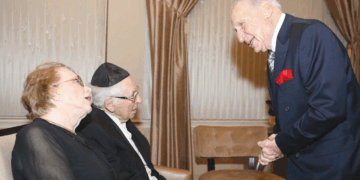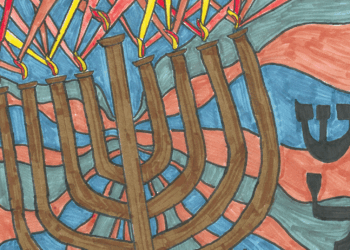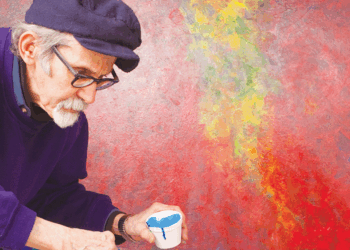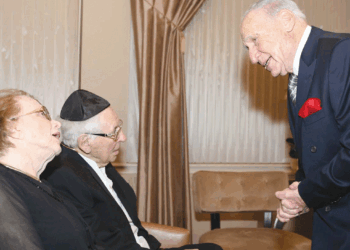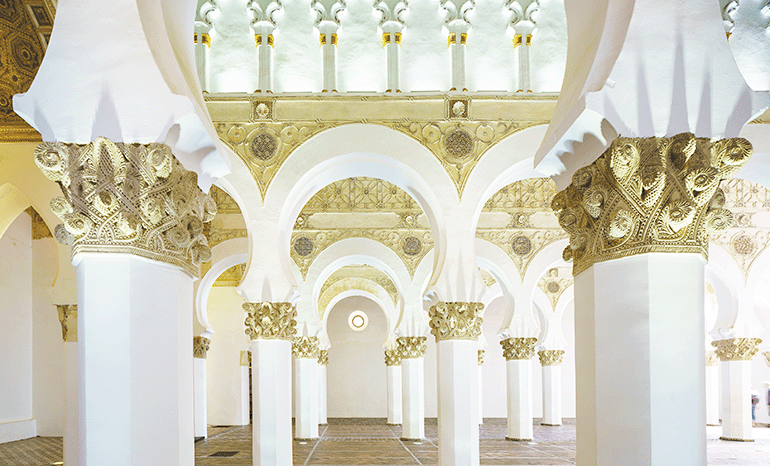
Reviewed by MORDECAI SPECKTOR
Make me a sanctuary, and I will dwell among them. — Exodus 25:8
In my travels through Europe and Israel, I’ve made a point of visiting houses of worship — mainly, synagogues, churches and cathedrals. They are marvels of architecture and some of them are repositories of great works of art.
In Prague, for example, during a 2018 visit, I signed up for a three-hour walking tour of what they call “The Jewish Museum,” which is four synagogues — in addition, a separate ticket admits one to the Altneu Shul (Old-New Synagogue), which has been in active use since the late 13th century — and the fantastic Old Jewish Cemetery, with its jumble of headstones going back hundreds of years.
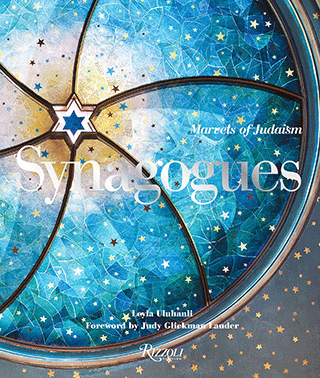
In Synagogues: Marvels of Judaism (Rizzoli New York), by Leyla Uluhanli, with a Foreword by Judy Glickman Lauder, the reader is treated to striking photos of synagogues around the world, from Israel to Asia to Europe and the New World. The book also serves as a history of the Jews, elucidating the peripatetic nature of our people, who occasionally settled in places and erected magnificent synagogues.
An introductory essay, “Elements of the Synagogue,” by Aaron W. Hughes, chair of Jewish studies at the University of Rochester (N.Y.), notes that the dispersion of Jews around the globe following the destruction of the Second Temple, in 70 C.E., “was responsible for the introduction of new cultural forms as Jews increasingly interacted with the local communities in which they found themselves. As the Temple lay in ashes, Jews made their way westward to Sefarad (Spain, North Africa, Turkey, and central and southern Asia) and eastward to Ashkenaz (central and eastern Europe). From such places they made their way farther — to the New World, to Asia, to the Pacific, and to sub-Saharan Africa.”
Without the Temple, “Judaism was now portable,” according to Hughes. Judaism “could be practiced anywhere in the world that Jews found themselves. The synagogue — from the Greek synagogé, or “assembly” (hence the Hebrew term beit ha-knesset, or “house of assembly”) — now took on, in the Temple’s absence, a central and defining role in the religious and spiritual lives of Jews.”
In his illuminating essay, which explains the different features of the synagogue, Hughes explains that synagogues “represent the quest for Jewish permanence. They symbolize Jewish belonging in a world in which Jews have most always functioned as a minority. The synagogue, more than any other physical structure, demonstrates safety in the midst of chaos, the place where Jews are able to congregate in a community and communicate with the God who has redeemed them numerous times in the past, from the Exodus to survival after the Holocaust.”
Hughes explains the varied elements found in a synagogue: the beit ha-midrash, “house of study”; the bima, “often a raised platform” where the Torah is read; ner tamid, a constantly lit light that reminds congregants of the menora “that would have stood in the Temple in Jerusalem”; a mechitza, a partition separating men and women in Orthodox shuls; etc.
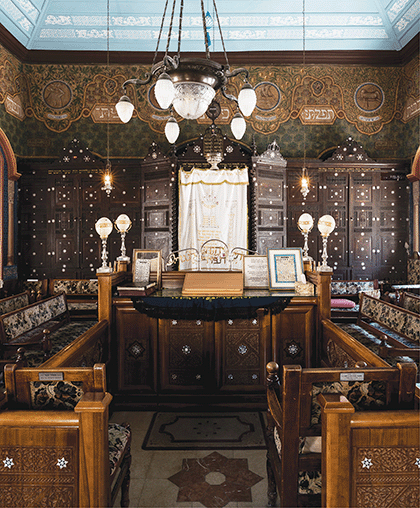
I was especially interested in the section “Synagogues in the New World,” by Samuel D. Gruber, an architectural historian and historic preservationist who is president of the International Survey of Jewish Monuments.
“The first Jewish immigrants to the New World were Spanish and Portuguese Jews who came by way of Holland,” writes Gruber. “Many arrived in the first quarter of the seventeenth century and settled in Dutch Brazil and in neighboring Suriname. When they were expelled from Brazil in 1654 by the Portuguese, these Jews found refuge in Dutch Suriname and Curaçao, a Caribbean island that became a pivotal Jewish center. At the same time, a small group of Jewish refugees from Brazil settled in New Amsterdam (now New York), where they founded Congregation Shearith Israel (Remnant of Israel). Over the next two centuries, Sephardi Jews settled in other cities along the East Coast of North America and moved steadily into the interior.” The first photo in the New World section is of Mikvé Israel (Mikvé Israel-Emanuel Synagogue), Willemstad, Curaçao. Mikvé Israel, founded in 1732, is the “oldest synagogue building in continuous use in the Western Hemisphere.”
As it happens, my youngest son, Isaac, and his girlfriend Diana are vacationing in Jamaica, and Isaac recently sent us pictures of Synagogue Shaare Shalom, in Kingston. He commented that the shul is one of three in the world that has a sand floor. (Isaac mentioned that he was given an aliya.) The description of Mikvé Israel in Willemstad notes: “White sand covers the floor, typical of many synagogues in the Caribbean, such as the neighboring Hebrew Congregation of Saint Thomas …”
Those interested in Judaica and our Jewish heritage will want a copy of Synagogues: Marvels of Judaism, a volume to read through or delve into from time to time. The book will bring back memories of synagogue visits past, like touring the Great Synagogue on Dohány Street, in Budapest, Hungary, with its striking Moorish twin towers and awe-inspiring, vast golden sanctuary.
And this book might inspire future travels, like a visit to Beth Shalom Congregation in Elkins Park, Pennsylvania, a striking building inside and out, and famed architect Frank Lloyd Wright’s only synagogue. Wright said, “When you go into a place of worship, you ought to feel as if you were in the hands of God.” Unfortunately, Wright died shortly before the synagogue’s completion in 1959.

